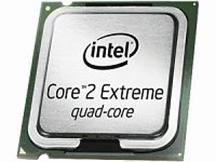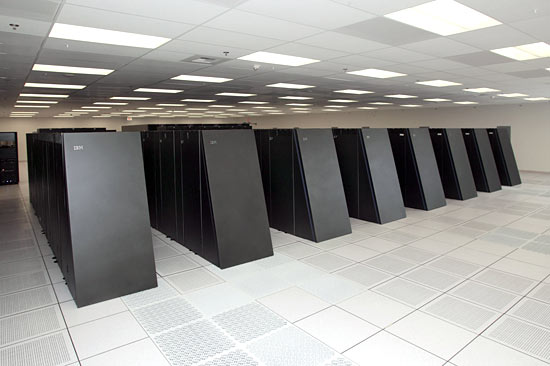|
Parallel & Multi-Core Processing |


|
Super Computers Continued |
|
Ranger (Potentially the fastest Supercomputer)
Ranger has 3,936 nodes, 62,976 processing cores, 123TB of total memory with 504 Teraflops of performance. http://www.tacc.utexas.edu/resources/hpcsystems/ Ranger can be configured to provide as much as 1.7 petaflops. A teraflop is one trillion floating point operations per second, and a petaflop is one quadrillion. Ranger is used to create longer forecasts for climate, weather, and ocean modeling, and earthquake and seismic simulations, water resource management, new energy sources, natural disasters, new materials and manufacturing processes, tissue and organ engineering, patient-specific medical therapies, and drug design. These issues cannot be addressed or overcome without modeling and simulation and Ranger will be able to provide the necessary simulations so that scientists can extract the data they need. As of now Ranger isn't the fastest Supercomputer, but that could change in the future. A big source of power for Ranger will be its connection to the TeraGrid network. What the TeraGrid network is is a network of multiple computers where researchers to link and use multiple computers with diverse architectures, data bases, and visualization facilities independent of where they are and who operates them. With the additional power of the TeraGrid network, Ranger is hoped to exceed 1 petaflop of performance.
|


|
BlueGene/L (Currently the fastest Supercomputer) · BlueGene/L is currently the top Supercomputer in the world according to TOP500 which is a website which ranks all the supercomputers in the world. Currently Ranger isn't on there because it was only released in early February. (2007) · BGL has a peak speed of 596 teraFLOPS. In partnership with IBM, the machine was scaled up from 65,536 to 106,496 nodes in five rows of racks; the 40,960 new nodes have double the memory of those installed in the original machine. · Like the Ranger, BlueGene/L will be used for semiconductor, physics and protein research. · To give a perspective of how fast technology has come, a thirty day calculation on what was the number three computer on the top500 in Summer 2003, would now only take three days on a BlueGene L system. · BlueGene is used for data management for businesses, simulations of nuclear explosions, complex biochemical reactions, drug simulation |